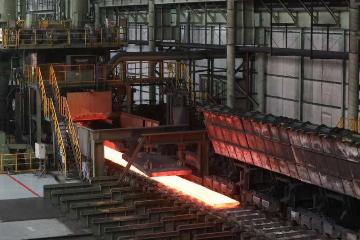In a surprisingly swift turn of events, the United States has found itself in the grips of a steel shortage, while China, the world's largest producer of steel, appears to be holding a critical leverage in the international marketsAs nations struggle to secure this essential material, China, with its massive production capacity, is in a unique positionIn May, the average price of China's eight major steel products surged past 6,600 yuan per ton, reflecting an astonishing 75% increase compared to the same period last year.
Given the circumstances, one might expect China to expand its steel production and seize market opportunities to earn significant profits as a major exporterHowever, rather than ramping up production, China chose to cut back on its output and control export volumesThis strategic decision to reduce supply has left countries like the United States and Germany, already grappling with their steel shortages, facing even harsher conditions
Advertisements
But what does it matter? The ripple effects across global markets have placed China in a commanding position.
The scale of China's steel production is staggeringWith an annual output exceeding 1 billion tons, China's contribution to the global market is monumentalIn 2023, China accounted for 67% of the global production of pig iron and 57% of crude steelThese numbers illustrate that China's output alone surpasses the total production of steel from all other countries combined, characterizing its dominance in the sector.
As China consolidates its position, nations like India, South Korea, and Vietnam have also fallen into the same predicament, deepening their reliance on Chinese steel suppliesWhile the United States may be seen as a powerhouse of industry, it has long since neglected its infrastructure and domestic steel production has significantly dwindled
Advertisements
Rising labor costs and a diminishing workforce have exacerbated the situation, raising the stakes for imported steel.
The market dynamics shifted dramatically with the onset of the pandemicIn response to economic challenges, the U.Sgovernment initiated ambitious infrastructure projects, creating an insatiable demand for steelConsequently, domestic production could not meet the rapidly increasing requirements, propelling the price of steel to unprecedented heightsIn fact, U.Ssteel prices have surged by over 215%, and futures prices have skyrocketed by an eye-watering 400%.
The logical response to this crisis would be to bolster imports, leading to a widespread global steel shortageHowever, amidst this chaos, China has emerged as the significant beneficiary, with net profits for member steel companies reported to have soared by 150%, equating to a staggering increase of over 290 billion yuan
Advertisements
This surge in profitability invariably raises eyebrows and reflects the shifting tides of power within the industry.
Australia has played a crucial role in this unfolding narrativeThe global steel production heavily relies on iron ore, and due to the multinational steel scarcity, Australia has seen a dramatic rise in iron ore prices, achieving a historical highThis uptick has allowed not only Australia to reap substantial profits but also compelled countries, including China, to adjust their steel pricing strategiesMany commentators have suggested that the U.Smight have been unwittingly maneuvered into a difficult position by its dealings with Australia.
In response to the soaring prices of iron ore in Australia, China has taken proactive measures to correct its approachThrough various interventions, the price of iron ore has seen a decline, while concurrently, China is enhancing its investments in iron ore mining across several African nations
- US Stocks Decline Across Key Sectors
- AI, Innovation Fuel Industrial Revival
- Nvidia on Quantum Computing: A Misunderstanding?
- Can Digital RMB End the Dollar's Dominance?
- Major Indices Mixed as Volume Dips Below 500B
This strategic pivot could diminish Australia's grip on iron ore pricing and significantly impact its economy, as China stands as a leading importer of this critical commodity.
For China, gaining greater control over iron ore sources means less dependence on Australian pricing, a long-awaited shift in the balance of powerHistorically, China has struggled with a lack of pricing power in the international market, but changes in these dynamics suggest a potential stabilization around more reasonable price points for both steel and iron ore.
Concerns arise, however, about why China is not maximizing production to capitalize on the current steel crisisOne could argue that by overextending production to chase profits, prices could plummet, leading to an eventual oversupply when demand inevitably tapers off, a painful scenario reminiscent of the overproduction crisis faced in 2015. Such strategic missteps could leave China vulnerable, illustrating the importance of nuanced decision-making in global markets.
Focusing exclusively on increasing output overlooks the equally essential quality consideration

Leave A Reply